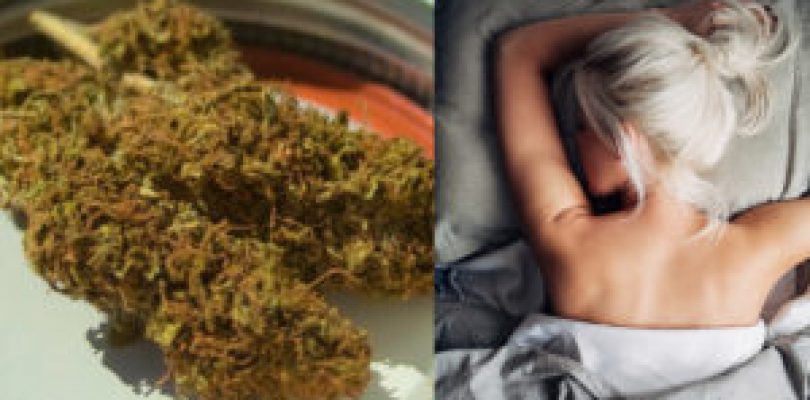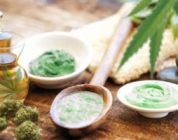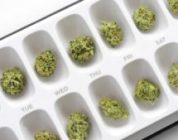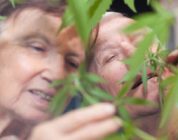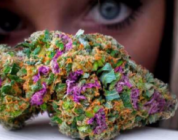 In an article in Forbes, Carolyn Rosenblatt mentioned that her 95-year old mother-in-law’s decades long struggled with insomnia. After several tries, her mother-in-law finally found a remedy in cannabis drops with a specific ratio of THC: CBD.
In an article in Forbes, Carolyn Rosenblatt mentioned that her 95-year old mother-in-law’s decades long struggled with insomnia. After several tries, her mother-in-law finally found a remedy in cannabis drops with a specific ratio of THC: CBD.
There’s good news and bad news here. The good news is that cannabis may benefit victims of insomnia. But, it remains an anecdote pointing up the lack of solid science in this area. It leaves you concerned how to self-treat insomnia with cannabis.
The Insomnia Problem
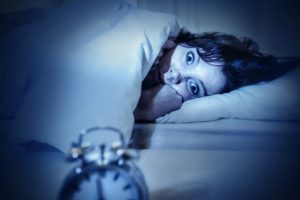 The National Sleep Foundation lists forms of insomnia:
The National Sleep Foundation lists forms of insomnia:
- Acute Insomnia labels a short spell with sleeping problems resulting from a major life event. It usually resolves itself without care.
- Chronic Insomnia is difficulty with sleeping at least three nights a week or three months or longer.
- Comorbid Insomnia links sleep problems with other medical or psychiatric conditions like chronic pain or depression.
- Onset Insomnia affects sleep at the beginning of the night.
- Maintenance Insomnia refers to patterns of waking at night with difficulty returning to sleep.
Here are the numbers:
- Insomnia in Women — According to WomensHealth.gov, “Women are more likely to have insomnia than men.” Pregnancy, menopause, perimenopause, and menstrual cycles all conspire to cause insomnia and to attach to related cases of depression, fibromyalgia, restless leg disorders, and more.
- Insomnia in Men — National Geographic reported results of one long-term study at Pennsylvania State university’s Sleep Research & Treatment Center: “The findings suggest that chronic male insomniacs are four times more likely to die early—even after taking into account risk factors such as smoking, obesity, and sleep apnea.”
- Insomnia among the Elderly — Insomnia.net reports, “Insomnia and general sleep disturbances are common among older adults and the elderly. But are pernicious in that they can lead to serious medical side effects with far-reaching ramifications.”
- Insomnia among Veterans — PTSD.va.gov explains, “Sleep problems, in particular chronic insomnia and nightmares, are frequently some of the most troubling aspects of PTSD.” That’s 90-100% of Vietnam Vets with PSTD and 92% of PSTD veterans of deployment in Afghanistan and Iraq.
Put this altogether, and you have something approaching 40% of Americans suffering from insomnia which, if left untreated, can lead to chronic, serious, and even fatal results.
Conventional treatments
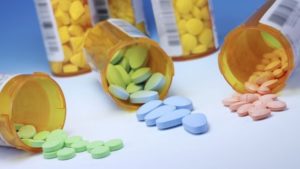 Correctly diagnosed, serious and chronic insomnia is treated with Cognitive-Based Therapy which means relearning how to sleep:
Correctly diagnosed, serious and chronic insomnia is treated with Cognitive-Based Therapy which means relearning how to sleep:
- Biofeedback displays digital signals on portable devise. You adjust heart rate, blood pressure, muscle tension by managing your response.
- Relaxation Training involves meditation and relaxation exercises to calm body and mind.
- Sleep Environment needs to be cool, dark, and quiet. And, that includes veiling the glow from nightlights, clocks, and other digital devices.
- Sleep Hygiene cleans up your pre-sleep patterns by prohibiting stimulants, food, and intoxicants late in the day and evening. It promotes exercise and record keeping.
- Sleep Restriction starts by reducing your sleep time. Once you sleep deprivation produces better sleep patterns, you add more time in bed.
Other practitioners recommend sedative medications including Ambien, Lunesta, Zolpidem, and others. Some prescribe Benzodiazepine pills with sedating side-effects like Valium, Trazodone, and Clonazepam. But, even the prescribers acknowledge the risk of negative side-effects.
How to Self-Treat Insomnia with Cannabis
 Current Psychiatry Reports (2017) published a review of the scientific literature on how cannabis affects sleep disorders. They concluded, “Research on cannabis and sleep is in its infancy and has yielded mixed results. Additional controlled and longitudinal research is critical to advance our understanding of research and clinical implications.”
Current Psychiatry Reports (2017) published a review of the scientific literature on how cannabis affects sleep disorders. They concluded, “Research on cannabis and sleep is in its infancy and has yielded mixed results. Additional controlled and longitudinal research is critical to advance our understanding of research and clinical implications.”
The survey showed mixed results:
- Cannabidiol (CBD) shows therapeutic potential for treatment of insomnia.
- Delta-9 tetrahydrocannabinol (THC) may help with sleep latency but could impair sleep quality long-term.
- Synthetic cannabinoids (e.g., nabilone and dronabinol) indicate short-term benefit for sleep apnea because they modulate Serotonin.
- CBD holds promise for patients suffering from REM sleep behavior disorder and excessive daytime somnolence.
- Nabilone may reduce PTSC-related nightmares and may improve sleep among those suffering chronic pain.
It will take time, patience, and extensive scientific research to identify the pharmacological mechanism working between cannabis and sleep disorders. So, we return to anecdotal reports on successful self-medication.
You can infer from the existing scientific evidence that, Indica-dominant strains will serve your sleep needs in different ways:
- Afghan Kush eliminates those anxious and depressing concerns that get in the way of solid sleep. It is a solid Indica with THC: 21%, CBD: 6%, and CBN: 1%. The high CBD offsets the significant THC factor to leave you falling asleep. It is not recommended for daytime use or use while operating machines because of its deep and lasting sedation.
- Critical Mass offers 80% Indica and 20% Sativa with 19% THC and – 22% and 5% CBD. Smoking only small amounts of this herbal taste leads to creative euphoria, laziness, and sleep.
- God’s Gift reduces stress before sleeping with its 90% Indica and 10% Sativa with THC: 27% and CBD: 1%. Despite the potent THC/CBD ratio, the cerebral effect is largely dreamy and relaxing. Three puffs into this strain, and you will sleep soon and long.
- Granddaddy Purple is easy to find. A classic treatment for pain, it is noted for its rich grape and berry taste flavor. It has 70% Indica and 30% Sativa with THC: 17% – 27% and CBD: 7%. That’s enough THC to give you a euphoric rush, and enough CBD to lock you in place with a full-body relaxing stone.
- Shark Shock CBD is a super high CBD Indica-dominant hybrid testing at with 5% THC and a whopping 10% CBD. Effects are powerfully relaxing though not heavy. It lets you unwind and ease into a sleep mode.
There are many other strains that offer relief, but each user responds differently, so there will be trial and error. Those needing relief from occasional insomnia may benefit from one strain, but the PTSD patient may need more or less, especially if there are other medications involved in therapies.
Moreover, you must consider non-smoking options in oils and edibles. Seniors, for example, may benefit from lozenges, chewables, candies, oils, tinctures, or oils. Assuming the senior does not smoke, s/he may prefer to micro dose with edibles or administer oil sublingually. You are likely to find a working solution just as Carolyn Rosenblatt found for her mother-in-law.
